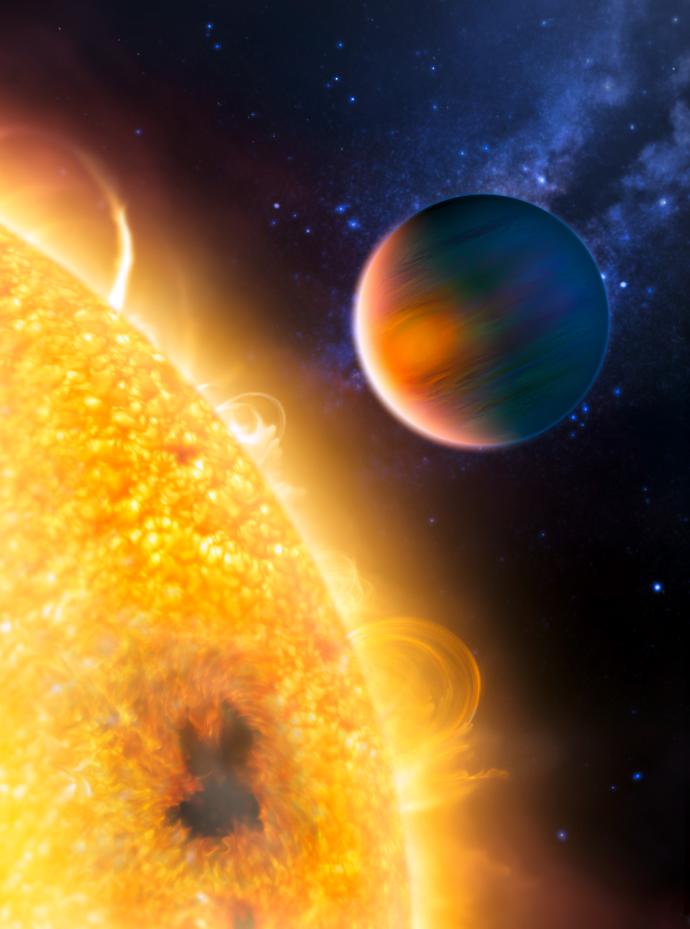An exoplanet is a planet which orbits a star that is not our Sun. The name exoplanet comes from 'extra-solar planet'.
In 1992, the first exoplanet was discovered. It was found in orbit around the pulsar PSR 1257+12. It took 3 more years before a planet was found in orbit around a Sun-like star, 51 Pegasi. Since 1995, astronomers have found more than 5,000 exoplanets!
There are various ways to detect exoplanets. Astronomers often find exoplanets by observing changes in the star which the planet orbits around. This is because the planets are smaller and do not shine like stars, so they are very difficult to see.
Scientists have categorized exoplanets into 4 types:
- Gas giant
- Neptunian
- Super-Earth
- Terrestrial

Around 30 % of exoplanets are gas giants. These worlds are made mostly of gas and are similar in size to Jupiter or Saturn. However, many of these gas giants are much closer to their star than Jupiter is to the Sun. This means they are likely to be much hotter than the gas giants in our Solar System. This is why they are sometimes called 'hot Jupiters'.
Another 35% of exoplanets are Neptunian. These worlds are a similar size to our ice giants Neptune and Uranus.
Around 31% of exoplanets are super-Earths. They are called super-Earths because they are bigger than Earth, but smaller than Neptune. There are no planets of a similar size in our Solar System. The name only refers to their size, they may not be similar to Earth in any way.
The final 4% of known exoplanets are terrestrial. These are exoplanets which are a similar size to the Earth and made of rock. Some of these rocky worlds are the right distance from their star for liquid water to exist. This area of space around a star is often called the habitable zone or 'Goldilocks zone' because it is not too hot, and not too cold! But at the moment, we don't have enough data to know if these terrestrial worlds do have oceans, atmospheres, or life.
Astronomers have discovered many stars with more than one planet in orbit around them. In 2017, NASA announced the largest extra-solar system discovered so far. The TRAPPIST-1 star has 7 terrestrial exoplanets, some of which are in the habitable zone.
New telescopes like the James Webb Space Telescope will be able to study the light from these planets. This will help us understand how hot they are and what they are made of.
